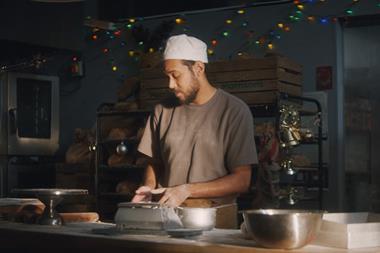Lockdowns at Christmas may mean major work in retailers’ IT departments halts, but that doesn’t mean that the IT staff are left idle – far from it. Liz Morrell reports
Christmas is a busy time for all of retailers’ departments and most find themselves pushed to the limit. But, for the IT department, the Christmas trading period is a time when change is kept to a minimum and systems are locked down.
“We have a lockdown from October 1 to the end of January,” says Peacocks group operations director Neil Burns. “We wouldn’t implement any major new systems or a major roll-out during this time.”
And it is a similar story at Boots. “We have a very clear change moratorium from early November to early January to significantly reduce the amount of system and infrastructure change being implemented in the IT environment,” says Boots IT service delivery director John Rignall.
For other retailers, the lockdown may come a little later, but it’s still a prominent feature of the festive period. “We start it slightly later than most retailers, with a soft lockdown that hardens towards the middle of November. After that, any changes need my sign-off,” says Somerfield business systems director Mike Bell. The grocer’s lockdown ends on January 3.
This is partly due to Somerfield’s Christmas trading pattern. “Because we are a top-up shop and have a fairly small seasonal offering, we do have an uplift and increase in basket size – but in the last three days,” says Bell.
By mid-November, most retailers will have halted major change. “After mid- to late November, I don’t see many people throwing new things in,” says Mike Davies, European general manager, retail at IT and systems provider Wipro Technologies and a former IT director. When a lockdown period ends also differs, depending on the sector. Clothing retailers, for example, tend to run through to the end of January because of the refund and Sales periods.
MINIMUM DISRUPTION
During these restrictive periods, the IT department’s role changes to one of support rather than development, but that isn’t the primary reason for the lockdowns. “It is not so much that it’s all hands on deck to support the existing systems, but more that the business doesn’t want to be involved in change at that time,” says Burns.
Bell agrees. “This is absolutely the time where I always have the right to say no to my users. In this instance, we are looking for consistency of procedures and reduction of risk. We move from a service function to a control function for the good of the business,” he says.
Similarly, Davies says: “The Christmas peak is a huge step up for the whole of the business. One of the things the IT department is definitely trying to do is minimise change during this time – it’s a de-risking measure.”
However, if a roll-out is near completion and will be of benefit to Christmas trading, it won’t necessarily be abandoned if the project is near completion. As Davies says: “There are some things you really want to get out there before Christmas – things that will ease the pressures of Christmas, such as taking seconds off transaction processing.”
Over the past two years, Peacocks has introduced a new EPoS system to stores. During the first year, the roll-out was halted during lockdown but, last year, the retailer simply ramped up the roll-out to ensure it was completed in time for Christmas trading.
Any initiatives that do proceed during a lockdown will go ahead with caution, though. “Most roll-outs stop. There are some that I have to continue, but I will put cotton wool around those,” Bell says.
At Peacocks, systems will be supported throughout the Christmas period and, while staffing may not necessarily be ramped up during this period, most IT staff will be available just in case the worst happens. “We will put additional effort into supporting anything that’s new. For example, last year, we had to go in to support the new EPoS roll-out, so put some of our team on the helpdesk,” Burns says.
“We manage with the same headcount as we would any other time in IT. The only area where we would put in extra support is on our helpdesk.”
Meanwhile, at Somerfield, IT staff’s Christmas break has been postponed. “We have sat down as a team and decided that we will not have our Christmas until the end of January,” says Bell. “We will run rotas and schedules as normal, but with added concentration and, during the period from Christmas to New Year, everyone will be contactable and available.”
Boots implements an element of self-help in stores to help staff through the Christmas period. “Self-help cards will arrive in all our stores during November to enable stores to resolve issues with tills even quicker in the event of a failure. Seasonal tills are serviced and activated to support additional volumes and, in larger stores, easy-to-replace spares packs [for the tills] are refreshed,” says Rignall.
IT staff particularly need to be available when Sales begin during the Christmas and New Year period, to ensure that price changes come into operation smoothly. “Our biggest day is Boxing Day. We have to make sure it’s all up and working properly and will get people in for first thing on Boxing Day morning, but it’s really just for a few hours,” says Burns.
Rignall agrees that preparing for the post-Christmas Sales is key. “IT works closely with our pricing team to test and check delivery of all key price changes in stores to ensure the tills are ready to present the right deal on the right day and match customer expectations. We carefully manage the volume of price-change transactions in batches overnight to our stores,” he says.
Book retailer Blackwell’s has two peak trading seasons – its back-to-university period, when it takes about a third of its annual sales in a 10-week period, and the traditional Christmas peak. “For our first Christmas – back-to-university, which has just finished – the IT support is critical in managing satellite or connect stores, as our chain goes from 60 to 100 units in a very short space of time. These principles then roll into Christmas itself,” says Blackwell chief executive Vince Gunn.
EVERY SECOND COUNTS
But while roll-outs may generally be on the back-burner during lockdowns, the time isn’t spent idly. For one thing, it offers a great opportunity for analysing how well systems can cope under pressure. “This is a great time for us to check everything out – for instance, that our networks work and our systems are robust – and to talk to suppliers to ensure back-up hardware is available,” says Bell.
The period also allows time to plan for new systems and roll-outs. “We have a rolling plan of development, so this gives us a time to really look at that,” he adds.
Davies believes that the role of the IT department should be split during this period. “Some people will be looking at keeping the engine running and making sure it’s serviced, while others should be planning for next year. It’s a time to look at what you would do differently,” he says.
As soon as the lockdown period ends, Burns’ team is ready to run with new projects. “By the end of January, we have done all our planning and the idea is to be ready to go with any project, because there are other trading peaks that we need to avoid too,” he says.
Davies agrees that holding out for the new year is for the best. “You can carry on developing things – you just aren’t going to necessarily make them live until the new year, because you are not going to throw the risk out there. But you want it out there by Easter, which is another peak,” he says.
Many retailers use the Christmas period for back-to-the-floor exercises, which should include the IT department. “We split the IT department into project areas and the retail project team will spend one or two days in-store to see how the systems cope and get a feel for how users are coping with any new systems,” says Burns.
Bell says that, at Somerfield, his 20-strong IT team adopts this practice throughout the year, going back to the floor for two days every month and buddying between 14 and 20 stores. There are also monthly conference calls with stores to find out what is and isn’t working for staff.
This also happens at Boots. “Over this important period, the service desk extends to support store events such as customer evenings and implements a proactive buddying up of individuals on the service desk to 200 stores to sweep for issues not yet reported,” says Rignall.
Davies says this is something that all IT departments should be doing. “I’ve always found it beneficial to get out and work in stores at Christmas. It brings you closer to your colleagues on the front line and you can often spot improvements that could be made in the future. It’s a time to learn and is a missed opportunity if you don’t do it,” he says.
“It’s not a time to be idle. You are doing a lot of things behind the scenes. It’s a 24/7 business running the IT department but, for a retailer coming up to Christmas, you have to be a bit sensitive and priorities will shift a bit,” he says. Other departments may think that the IT department has it easy during Christmas lockdown, but this is far from the case.
What the IT department gets up to over Christmas
Headcount on the IT helpdesk will increase and more senior IT staff may work on the helpdesk to get complex problems resolved quickly
Many IT staff will work on Boxing Day morning to make sure that price changes are properly processed for the start of the Sales
Peak trading allows the department to test the robustness of systems and health checks will be performed on key infrastructure
IT staff hit the shopfloor and see for themselves what changes could make the biggest improvement next Christmas
Planning for next year’s projects will take place so that they can begin at the end of January


























No comments yet